Subtotal: £52.26
4 X Red Marble Swordtails – Xiphophorus Hellerii – Livebearer (4), Stunning Livebearers That Enhance Your Aquarium’s Beauty, Ideal Companions for Peaceful Tank Environments
£14.99 Original price was: £14.99.£12.58Current price is: £12.58.
Welcome these beautiful Red Marble Swordtails (Xiphophorus Hellerii) into your aquarium! Their stunning colors and graceful movements make them ideal for community tanks. These livebearers thrive in well-maintained planted aquariums, enhancing your aquatic landscape beautifully.
999 in stock
Species Introduction
Key Features – 4 X Red Marble Swordtails – Xiphophorus Hellerii
Stunning livebearers that enhance your aquarium’s beauty, ideal companions for peaceful tank environments.
| Specification | Details |
|---|---|
| Benefits | Enhances your aquarium ecosystem |
| Quality | Premium aquarium-grade materials |
| Ease of Use | Simple setup and maintenance |
The Red Marble Swordtail, scientifically known as Xiphophorus hellerii, is a captivating freshwater fish that belongs to the family Poeciliidae. These stunning livebearers are native to the warm waters of Central America, particularly in regions such as Mexico and Belize. In their natural habitat, Red Marble Swordtails thrive in slow-moving rivers, lakes, and ponds, where they often inhabit lush vegetation and submerged structures that provide shelter and breeding grounds. Their vibrant colors and unique patterns make them a favorite among aquarists looking to enhance the beauty of their planted aquariums. As peaceful community fish, they are ideal companions for a variety of other species, making them an excellent choice for beginners and experienced aquarists alike.
Care Requirements Dashboard
✓ Care Level: Easy
Tank Size: 20 gallons minimum
Water Temperature: 72°F – 78°F (22°C – 26°C)
pH Level: 7.0 – 8.0
Hardness: 10 – 25 dGH
To ensure the health and well-being of your Red Marble Swordtails, it is essential to provide them with a suitable environment. A minimum tank size of 20 gallons is recommended to accommodate their active swimming behavior and social nature. The water temperature should be maintained between 72°F and 78°F, with a pH level ranging from 7.0 to 8.0. Additionally, a hardness level of 10 to 25 dGH is ideal for these fish. Regular water changes and proper filtration are crucial for maintaining water quality, which is vital for the overall health of your aquatic companions.
Natural Behavior & Temperament
Red Marble Swordtails are known for their lively and sociable nature. These fish exhibit a range of natural behaviors that make them fascinating to observe. In a well-maintained aquarium, they will often swim in schools, showcasing their vibrant colors and unique patterns. Their social behavior is characterized by a peaceful temperament, making them excellent candidates for community tanks. They thrive in environments where they can interact with other fish, and they are generally non-aggressive towards their tank mates. However, it is essential to avoid keeping them with overly aggressive species, as this can lead to stress and health issues.
Tank Setup Guide
Creating an ideal environment for your Red Marble Swordtails involves careful consideration of the tank setup. Begin by selecting a spacious aquarium of at least 20 gallons, as this will provide ample swimming space for these active fish. Use a fine substrate, such as sand or small gravel, to mimic their natural habitat. Incorporate plenty of live plants, driftwood, and rocks to create hiding spots and territories, which will help reduce stress and promote natural behaviors. Ensure that the tank is well-filtered and that the water flow is gentle, as Swordtails prefer calm waters. Additionally, consider adding floating plants to provide shade and cover, which can enhance their sense of security.
Water Quality Management
Maintaining optimal water quality is essential for the health of your Red Marble Swordtails. Regular testing of water parameters, including pH, temperature, and hardness, is crucial to ensure a stable environment. The ideal pH level for Swordtails ranges from 7.0 to 8.0, with a temperature between 72°F and 78°F. Water hardness should be maintained between 10 and 25 dGH. Conduct regular partial water changes of 25% every two weeks to keep the water clean and free from harmful toxins. Additionally, using a high-quality water conditioner can help remove chlorine and chloramines, ensuring a safe environment for your fish friends.
Feeding & Nutrition
Red Marble Swordtails are omnivorous and thrive on a varied diet. To ensure their health and vitality, feed them high-quality flakes or pellets specifically designed for tropical fish. Supplement their diet with live or frozen foods such as brine shrimp, daphnia, and bloodworms to enhance their color and promote healthy growth. A balanced diet will not only keep your Swordtails vibrant but also support their immune system. Feed them small amounts 2-3 times a day, ensuring that all food is consumed within a few minutes to prevent water quality issues. It is important to monitor their feeding habits and adjust portion sizes accordingly to maintain optimal health.
Compatibility Guide
When selecting tank mates for your Red Marble Swordtails, it is crucial to choose peaceful species that thrive in similar water conditions. Ideal companions include other livebearers like guppies and platies, as well as tetras, rasboras, and corydoras catfish. Avoid keeping them with aggressive fish or those that may nip at their fins, such as certain cichlids or bettas. A well-planned community tank should include a mix of species that complement each other, promoting a harmonious environment. Regular monitoring of fish interactions will help ensure that all inhabitants coexist peacefully.
Health & Wellness
Keeping your Red Marble Swordtails healthy requires attention to their environment and diet. Common health issues include ich, fin rot, and swim bladder disorders. To prevent these ailments, maintain stable water parameters and provide a balanced diet. Regular observation of your fish will help you identify any signs of illness early. Look for symptoms such as changes in behavior, loss of appetite, or physical abnormalities. If any health issues arise, promptly isolate affected fish and consult with an aquatic veterinarian for appropriate treatment options.
Breeding Information
Breeding Red Marble Swordtails can be a rewarding experience for aquarists. These livebearers are known for their prolific breeding habits. To encourage breeding, provide a separate breeding tank with plenty of hiding spots and plants. The female Swordtail can give birth to 20-100 fry every 4-6 weeks. After birth, it is crucial to remove the fry from the main tank to prevent them from being eaten by adult fish. Feed the fry specialized fry food or finely crushed flakes until they are large enough to consume regular food. Monitoring the growth of the fry is essential to ensure their health and development.
Acclimation Process
Introducing new Red Marble Swordtails to your aquarium requires a careful acclimation process to minimize stress and ensure a smooth transition. Begin by floating the sealed bag containing the fish in the aquarium for about 15-20 minutes to equalize the temperature. After this, gradually mix small amounts of aquarium water into the bag every 5-10 minutes for about an hour. This process helps the fish adjust to the water parameters of their new environment. Once acclimated, gently release the fish into the tank, avoiding the introduction of bag water to prevent contamination.
Long-term Care
To ensure the long-term health of your Red Marble Swordtails, it is essential to provide consistent care throughout their lifecycle. Monitor their growth and behavior regularly, making adjustments to their diet and environment as needed. As they mature, be mindful of their social dynamics and ensure they are not stressed by aggressive tank mates. Regular water testing and maintenance will help prevent health issues and promote a thriving aquarium environment. With proper care, these beautiful fish can live for 3-5 years, bringing joy and color to your aquarium.
Natural Habitat Recreation
Recreating the natural habitat of Red Marble Swordtails in your aquarium can enhance their well-being and promote natural behaviors. Incorporate a variety of live plants, such as Java fern and Anubias, to mimic their native environments filled with vegetation. Use driftwood and rocks to create hiding spots and territories, allowing them to feel secure. Additionally, consider using a substrate that resembles the sandy bottoms of their natural habitats. By providing a biotope that reflects their origins, you can help your Swordtails thrive and exhibit their natural behaviors.
Seasonal Care Adjustments
Seasonal changes can impact the care requirements of your Red Marble Swordtails. During warmer months, ensure that the water temperature remains stable and does not exceed 78°F. In colder months, consider using a heater to maintain the optimal temperature range. Additionally, adjust the lighting duration to mimic natural daylight cycles, which can influence their breeding behaviors and overall health. Regularly monitor water parameters and make necessary adjustments to maintain a stable environment throughout the year.
Expert Tips
For those looking to enhance their experience with Red Marble Swordtails, consider these expert tips. First, maintain a well-planted tank to provide hiding spots and reduce stress. Second, regularly rotate their diet to include a variety of foods, promoting vibrant colors and overall health. Third, observe their social interactions and be prepared to separate aggressive individuals if necessary. Lastly, consider keeping a ratio of one male to two or three females to reduce stress during breeding and ensure a harmonious environment.
Troubleshooting
If you encounter issues with your Red Marble Swordtails, it is essential to identify and address the problem promptly. Common issues include stress from aggressive tank mates, poor water quality, and inadequate diet. If you notice signs of stress, such as hiding or decreased activity, reassess their environment and make necessary changes. Regular water testing can help identify any imbalances that may be affecting their health. If health issues arise, consult with an aquatic veterinarian for guidance on treatment options.
Scientific Background
The Red Marble Swordtail, Xiphophorus hellerii, belongs to the family Poeciliidae, which includes various livebearer species. This family is known for its unique reproductive strategy, where females give birth to live young instead of laying eggs. The scientific classification of the Red Marble Swordtail highlights its importance in aquatic biodiversity and the need for conservation efforts in their native habitats. Understanding their taxonomy and ecological role can enhance our appreciation for these beautiful fish and the ecosystems they inhabit.
Advanced Care Techniques
For experienced aquarists looking to take their care of Red Marble Swordtails to the next level, consider implementing advanced techniques such as selective breeding to enhance desirable traits. Monitoring water parameters closely and utilizing advanced filtration systems can also improve water quality and fish health. Additionally, consider integrating aquaponics into your setup to promote plant growth while providing natural filtration for the fish. These advanced techniques can lead to a thriving aquarium ecosystem that benefits both the fish and their aquatic environment.
Frequently Asked Questions
Q: What tank size is required for Red Marble Swordtails?
To provide a suitable environment for Red Marble Swordtails (Xiphophorus hellerii), a minimum tank size of 75 litres (20 gallons) is recommended. This size allows ample swimming space and ensures stable water parameters, crucial for their well-being. Smaller tanks may lead to stress and territorial disputes, especially among males. A larger tank with well-planted areas and open swimming space will create a more natural habitat. Ensure the tank is properly cycled before introducing your aquatic companions to avoid harmful spikes in ammonia or nitrites.
✓ Expert Tip
Consider adding a filtration system that maintains water quality while creating gentle currents, emulating their natural habitat.
Q: What water parameters do Red Marble Swordtails require?
Red Marble Swordtails thrive in slightly acidic to neutral water, with a pH range of 6.8 to 7.8. The ideal temperature for these livebearers is between 24°C to 28°C (75°F to 82°F). Maintaining stable water conditions is paramount; fluctuations can lead to stress and illness. Regular water changes of 10-15% weekly will help keep ammonia and nitrite levels low. Monitoring hardness is also important; Swordtails prefer moderately hard water with a hardness of 10-20 dGH.
✓ Expert Tip
Utilise a reliable water testing kit to regularly check parameters and ensure a healthy environment for your fish friends.
Q: How often should I feed Red Marble Swordtails?
Feeding Red Marble Swordtails should occur 1-2 times daily, providing only what they can consume in a few minutes. A varied diet of high-quality flakes, pellets, and occasional treats like frozen or live foods will ensure they receive necessary nutrients. Overfeeding can lead to water quality issues and health problems, so it is vital to monitor their feeding habits. A fasting day once a week can also aid in digestion and prevent bloating.
✓ Expert Tip
Incorporate a variety of foods to promote vibrant colouration and overall health in your aquatic companions.
Q: What are the best tank mates for Red Marble Swordtails?
Red Marble Swordtails are generally peaceful and can coexist with various community fish. Suitable tank mates include other livebearers, such as guppies and platies, as well as tetras and rasboras. Avoid aggressive species or larger fish that may view them as food. It’s advisable to keep them in groups of at least three to promote natural behaviour and reduce stress. Always introduce new fish gradually and monitor interactions closely.
✓ Expert Tip
Create hiding spots with plants or decorations to provide security for all fish in the aquarium.
Q: How do I properly acclimatise Red Marble Swordtails to my aquarium?
Acclimatising Red Marble Swordtails is crucial for their health. Begin by floating the sealed bag containing the fish in your aquarium for about 15-20 minutes to equalise the temperature. Then, gradually add small amounts of tank water into the bag every 5-10 minutes for approximately an hour. This process helps them adjust to the water chemistry. Finally, gently release the fish into the aquarium, avoiding adding bag water to your tank to prevent contamination.
✓ Expert Tip
Be patient during acclimatisation; rushing the process can lead to stress or shock for your new fish friends.
Q: What are the signs of healthy Red Marble Swordtails?
Healthy Red Marble Swordtails exhibit vibrant colours, clear eyes, and active behaviour. They should swim freely and confidently, showing no signs of lethargy or hiding excessively. Additionally, their fins should be intact without any fraying or signs of disease. Regular monitoring of their eating habits is also essential; a healthy fish will eagerly respond to feeding. If you notice any changes in behaviour, such as reduced activity or loss of appetite, it may indicate stress or illness.
✓ Expert Tip
Keep a close eye on your fish friends and maintain a consistent routine to spot any potential health issues early.
Q: How do I successfully breed Red Marble Swordtails?
Breeding Red Marble Swordtails is relatively straightforward, as they are livebearers. To encourage breeding, maintain a ratio of one male to two or three females. Provide plenty of hiding spots and vegetation for the fry. Once the females are pregnant, which lasts about 4-6 weeks, they will give birth to live young. It is essential to separate the fry from adult fish shortly after birth to prevent them from being eaten. Feed the fry a high-quality powdered food or finely crushed flakes to promote healthy growth.
✓ Expert Tip
Consider having a separate breeding tank to reduce stress on the females and improve the survival rates of the fry.
Q: What temperature should I maintain for Red Marble Swordtails?
The ideal temperature range for Red Marble Swordtails is between 24°C to 28°C (75°F to 82°F). Maintaining a consistent temperature within this range is essential for their health and vitality. Sudden changes in temperature can cause stress and lead to health issues. It is advisable to use a reliable aquarium heater and thermometer to monitor the temperature accurately. Regular checks will help ensure your aquatic companions thrive in a comfortable environment.
✓ Expert Tip
Avoid placing your aquarium near windows or heat sources, as this can cause temperature fluctuations.
Q: How long do Red Marble Swordtails typically live in captivity?
In captivity, Red Marble Swordtails can live for approximately 3 to 5 years, provided they are kept in optimal conditions. Factors influencing their lifespan include water quality, diet, and overall tank environment. Regular maintenance and monitoring of water parameters can significantly contribute to their longevity. Additionally, a balanced diet and appropriate tank mates will promote a healthy life for your aquatic companions.
✓ Expert Tip
Keep a consistent routine for feeding and water changes to help maximise the lifespan of your fish friends.
Q: What type of substrate is most suitable for Red Marble Swordtails?
Red Marble Swordtails thrive in a variety of substrates, although a fine gravel or sand substrate is preferred as it allows for easier foraging. This type of substrate also promotes the growth of beneficial bacteria that contribute to a healthy aquarium ecosystem. If you choose to include live plants, ensure the substrate supports their root systems adequately. Avoid sharp substrates that could potentially injure your fish friends.
✓ Expert Tip
Incorporating live plants not only enhances aesthetics but also provides hiding spots and improves water quality.
Q: What behavioural patterns should I expect from Red Marble Swordtails?
Red Marble Swordtails are generally social and active fish. They enjoy swimming in groups and will often be seen exploring their environment. Males may exhibit territorial behaviour, especially during breeding periods, but this is usually mild. They are known for their playful nature and can often be seen engaging in courtship displays. Providing plenty of space and hiding places will help mitigate any aggressive tendencies and promote a peaceful community.
✓ Expert Tip
Observing their behaviour can provide insights into their health and wellbeing, so spend time watching your aquatic companions.
Q: How can I prevent common diseases in Red Marble Swordtails?
Preventing diseases in Red Marble Swordtails begins with maintaining good water quality and a stable environment. Regular water changes, proper filtration, and monitoring parameters are crucial. Quarantining new fish before introducing them to the main tank can prevent the spread of illness. Additionally, providing a balanced diet enhances their immune systems, making them less susceptible to diseases. Be attentive to any signs of stress or illness, such as changes in behaviour or appearance, and address issues promptly.
✓ Expert Tip
Utilising a high-quality water conditioner can also help maintain a healthy environment for your fish friends.
Q: What lighting conditions do Red Marble Swordtails prefer?
Red Marble Swordtails thrive under moderate lighting conditions, which can enhance their natural colours. A lighting duration of 10-12 hours daily is ideal, mimicking their natural habitat. Too much light can lead to algae growth, while too little can affect plant health. Providing shaded areas with plants or decorations can help create a balanced environment. Consider utilising LED lights for energy efficiency and adjustable brightness.
✓ Expert Tip
Experiment with different light settings to find what best suits both your fish and your aquascape.
Q: How do I recognise stress in Red Marble Swordtails?
Signs of stress in Red Marble Swordtails can include erratic swimming patterns, hiding excessively, or clamped fins. Additionally, a loss of appetite or colour fading may indicate that something is amiss. Monitoring their behaviour closely can help you identify issues early. If you notice any signs of stress, assess tank conditions, including water quality, temperature, and tank mates, to ensure a healthy environment for your fish friends.
✓ Expert Tip
Creating a calm environment with minimal disturbances can help reduce stress levels in your aquatic companions.
Q: What natural habitat conditions should I replicate for Red Marble Swordtails?
In their natural habitat, Red Marble Swordtails inhabit warm, freshwater rivers and streams with a moderate flow. To replicate these conditions, provide a well-planted tank with open swimming areas and hiding spots. Substrates of sand or fine gravel are preferable, and incorporating driftwood or rocks can mimic their natural surroundings. Maintaining stable water parameters and a consistent temperature will help create a suitable environment for your aquatic companions.
✓ Expert Tip
Regular maintenance and monitoring will ensure that you replicate the best possible conditions for your fish friends.


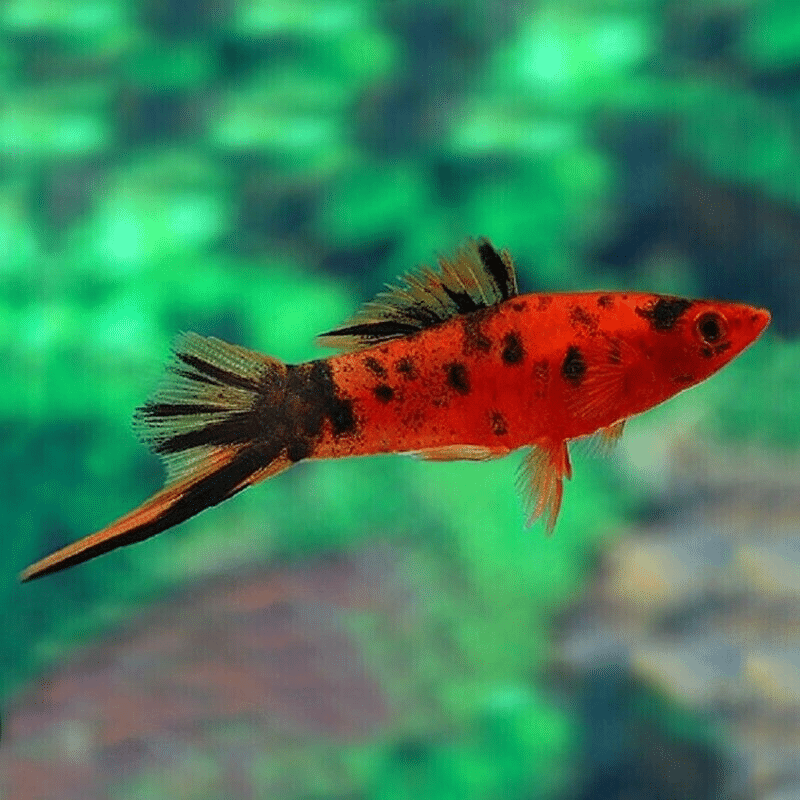

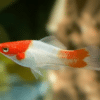


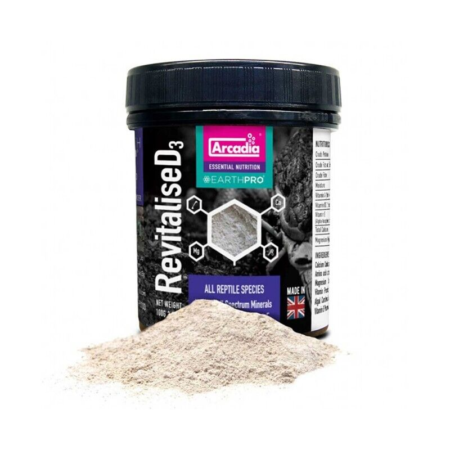



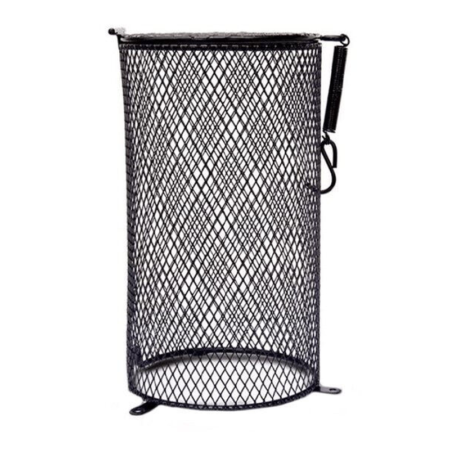
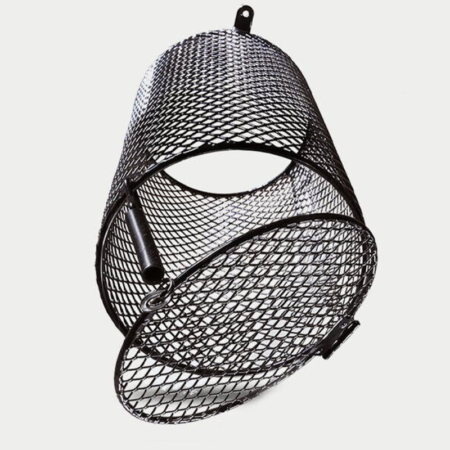
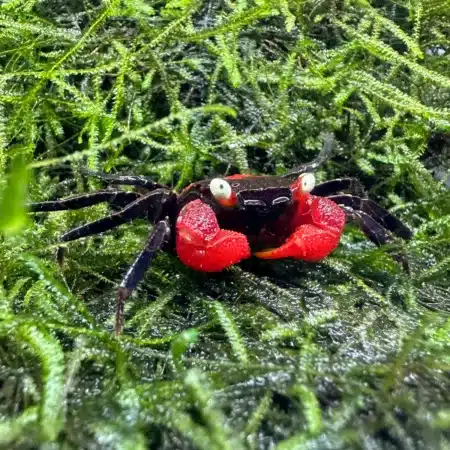

Emily Carter (verified owner) –
I recently added 4 Red Marble Swordtails to my 30-gallon aquarium, and I couldn’t be happier with my choice! These tropical fish are not only stunning with their vibrant colors, but they also have such lively personalities. It’s been about two weeks since I introduced them, and they’ve settled in beautifully. Their unique marbled patterns add a wonderful dynamic to my tank, and I love watching them swim around.
What really stands out is how active they are; they’re always exploring and interacting with each other and the other fish. Compared to other livebearers I’ve kept, these swordtail fish are much more sociable, which makes the entire aquarium feel more alive.
I do want to mention that they thrive best in a peaceful environment, so keep that in mind if you’re considering tank mates. Overall, I highly recommend these fish for anyone looking to add some color and charm to their aquarium. They’re perfect for both beginners and experienced hobbyists like me! I’m definitely planning to purchase more in the future!
Emily Carter (verified owner) –
I recently added 4 Red Marble Swordtails to my community tank, and I couldn’t be happier! These beautiful fish have transformed the entire atmosphere of my aquarium. The vibrant reds and marbles of their tails are absolutely mesmerizing, making them a standout feature in my freshwater setup. After about two weeks, they settled in perfectly and started displaying their lively personalities. I love how peaceful they are, which makes them ideal companions for my other tropical fish. I’ve had other livebearers before, but the swordtails are definitely more engaging and interactive.
I did notice they can be a bit shy initially, so providing some hiding spots really helps them feel secure. Shipping was quick and efficient, and they arrived healthy and ready to swim. I highly recommend these swordtails for anyone looking to enhance their aquarium’s beauty with stunning fish that are not only visually appealing but also thrive in peaceful environments. You won’t regret adding them to your tank! 🌊🐟